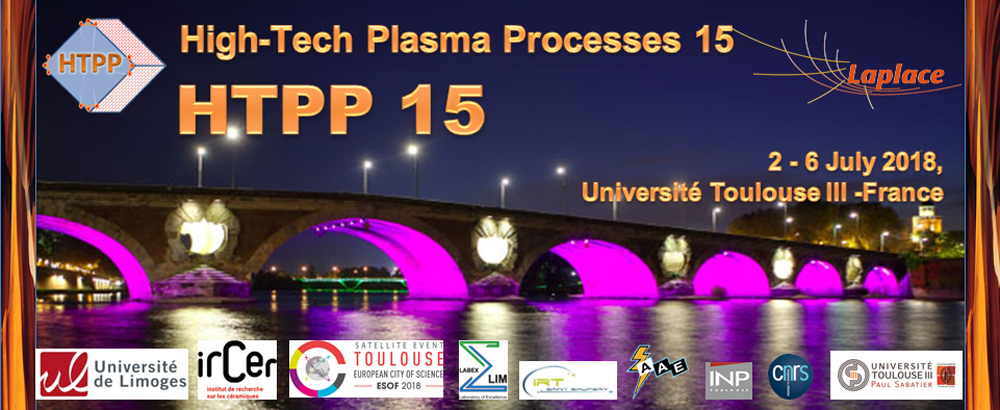Densities of active species in R/N2 and R/N2-x%H2 (R = Ar or He) microwave early afterglows
A. Ricard and J.P. Sarrette
LAPLACE, Université de Toulouse, CNRS, INPT, UPS 118 route Narbonne, 31062 Toulouse Cedex 9, FRANCE
Thème 3 – Advances and challenges in plasma diagnostics
Flowing afterglows have previously been studied [1] in N2 and Ar-N2 gas mixtures to produce N2 active species such as N-atoms, N2(A), N2(X,v >13) metastable molecules and N2+ ions. The interest of flowing afterglows is to select N2 active species downstream the plasma, that is in conditions close to room temperature and without electric field. In long time afterglows (late afterglows), at times of 10-2-10-1 s, the dominant N2 active species are the N-atoms. At short times of 10-3-10-2 s (early afterglows), N2(A), N2(X,v >13) metastable molecules and N2+ ions must be added to the N atoms.
Ar-N2 gas mixtures were previously studied [1] as they are easier to ionize than pure N2, producing a longer plasma column. It is presently compared the production of N2 active species in the early afterglows of Ar-N2 and He-N2 microwave plasmas at a constant gas pressure of 8 Torr, a flow rate of 1slm in a dia. 18 mm post-discharge tube at distances of 3 and 20 cm (times 10-3–3 10-2 s) and a transmitted power of 150 Watt. The interest of N2 dilution into Ar and He is to increase the electron energy in the plasma by avoiding the electron vibrational barriers at 3 eV in pure N2. The electron energy should be higher in He plasmas as a result of a lower electron excitation cross section (~ 3 10-18 cm2) compared with Ar (~ 3 10-17 cm2) and N2 (~ 3 10-16 cm2) and a higher excitation threshold (19 eV in He and 12 eV in Ar).
A pre-mixed N2-5%H2 mixture was also introduced in place of pure N2 to produce NH radicals and H-atoms in addition to the N2 active species.
Absolute concentrations of active species are deduced from optical emission spectroscopy (OES) after NO titration and simplified chemical schemes. In R/N2-x%H2 (R = Ar or He) mixtures, the NH radical and H-atom densities are evaluated by considering that the excitation of the NH(A) radiative states in the afterglow is produced by N2(X,v>13) + NH collisions.
It appears that the He/N2-5%H2 gas mixture could give about the same order of N and H-atom densities. The interest of these results concerns the enhancement of surface nitriding by combination of N and H atoms in afterglow conditions.
[1] H. Zerrouki, A. Ricard and J.P. Sarrette, (2014) Contrib. Plasma Phys., 54, 827-837 and J. Phys.:Conf. Series, 550, 012045.

 PDF version
PDF version
